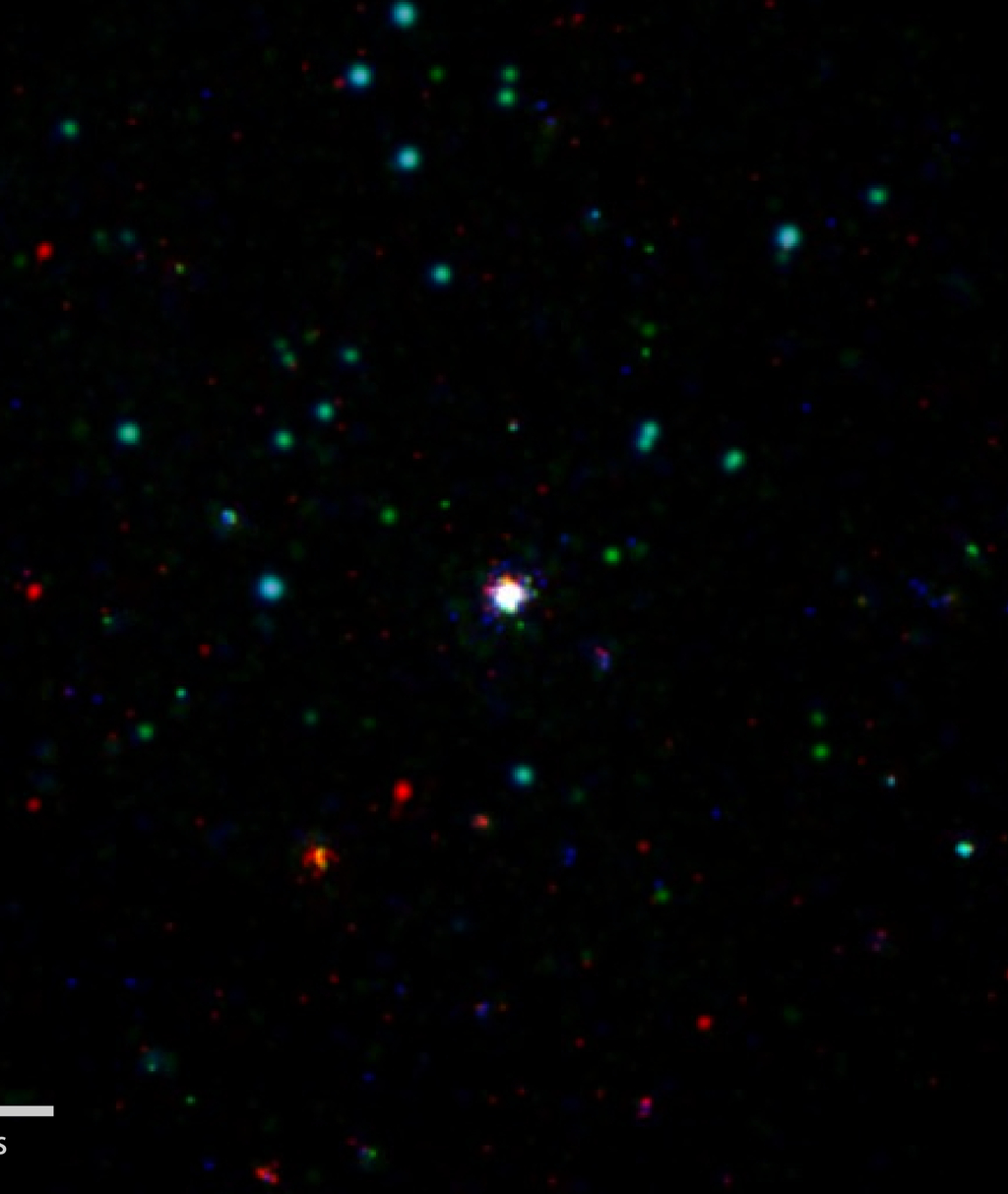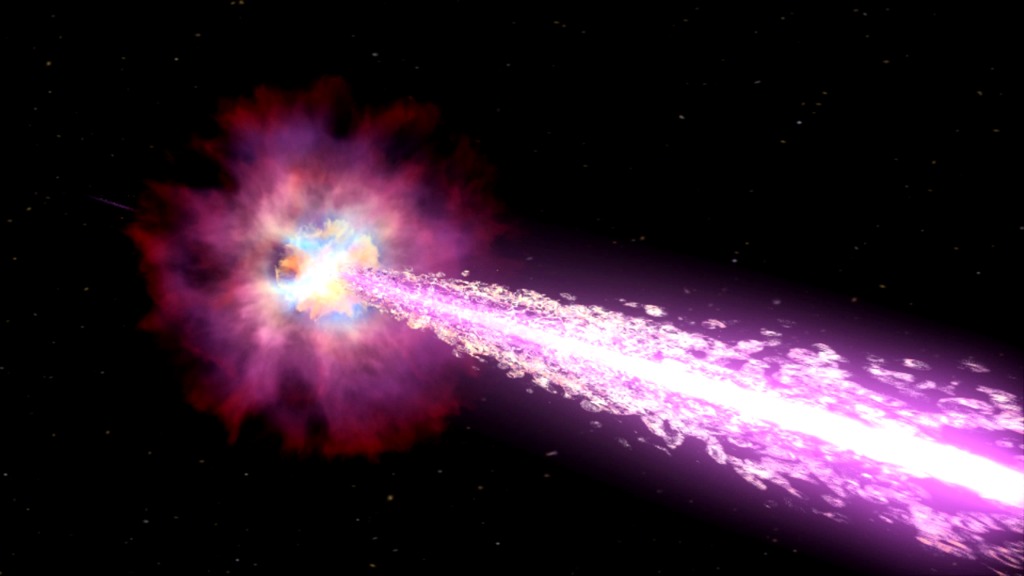1,000 and Counting

NASA's Swift spacecraft spots its thousandth gamma-ray burst.
After nearly 11 years in space, NASA's Swift spacecraft detected its 1,000th gamma-ray burst (GRB) on October 27, 2015. Astronomers classify GRBs by their duration, as the blast of high-energy light often lasts a minute or less. The October 27 event, dubbed GRB 151027B, is of the "long" variety, where the gamma-ray pulse lasts more than two seconds. They are believed to occur in a massive star whose core has run out of fuel and collapsed into a black hole. As matter falls toward the newly formed black hole, it launches jets of subatomic particles that move out through the star's outer layers at nearly the speed of light. When the particle jets reach the stellar surface, they emit gamma rays, the most energetic form of light. In many cases, the star is later seen to explode as a supernova. Explore the images to learn more.

This composite image of GRB 151027B (center) is made from observations by Swift's visible light, X-ray and ultraviolet telescopes.

Locations of all 1,000 Swift GRBs, including GRB 151027B, are shown on this map of the whole sky.

Scientists say the light from GRB 151027B took more than 12 billion years to reach Earth, making it one of the most distant bursts seen by Swift.
For More Information
See NASA.gov
Credits
Please give credit for this item to:
NASA's Goddard Space Flight Center
Cover image courtesy of NASA/Swift/Cruz deWilde
GRB 151027B image courtesy of NASA/Swift/E. Troja
Swift GRB map courtesy of NASA/GSFC/2MASS/J. Carpenter, T. H. Jarrett, R. Hurt
-
Writer
- Francis Reddy (Syneren Technologies)
-
Scientists
- Eleonora Troja (University of Maryland College Park)
- Neil Gehrels (NASA/GSFC)
Release date
This page was originally published on Thursday, November 12, 2015.
This page was last updated on Wednesday, May 3, 2023 at 1:49 PM EDT.

